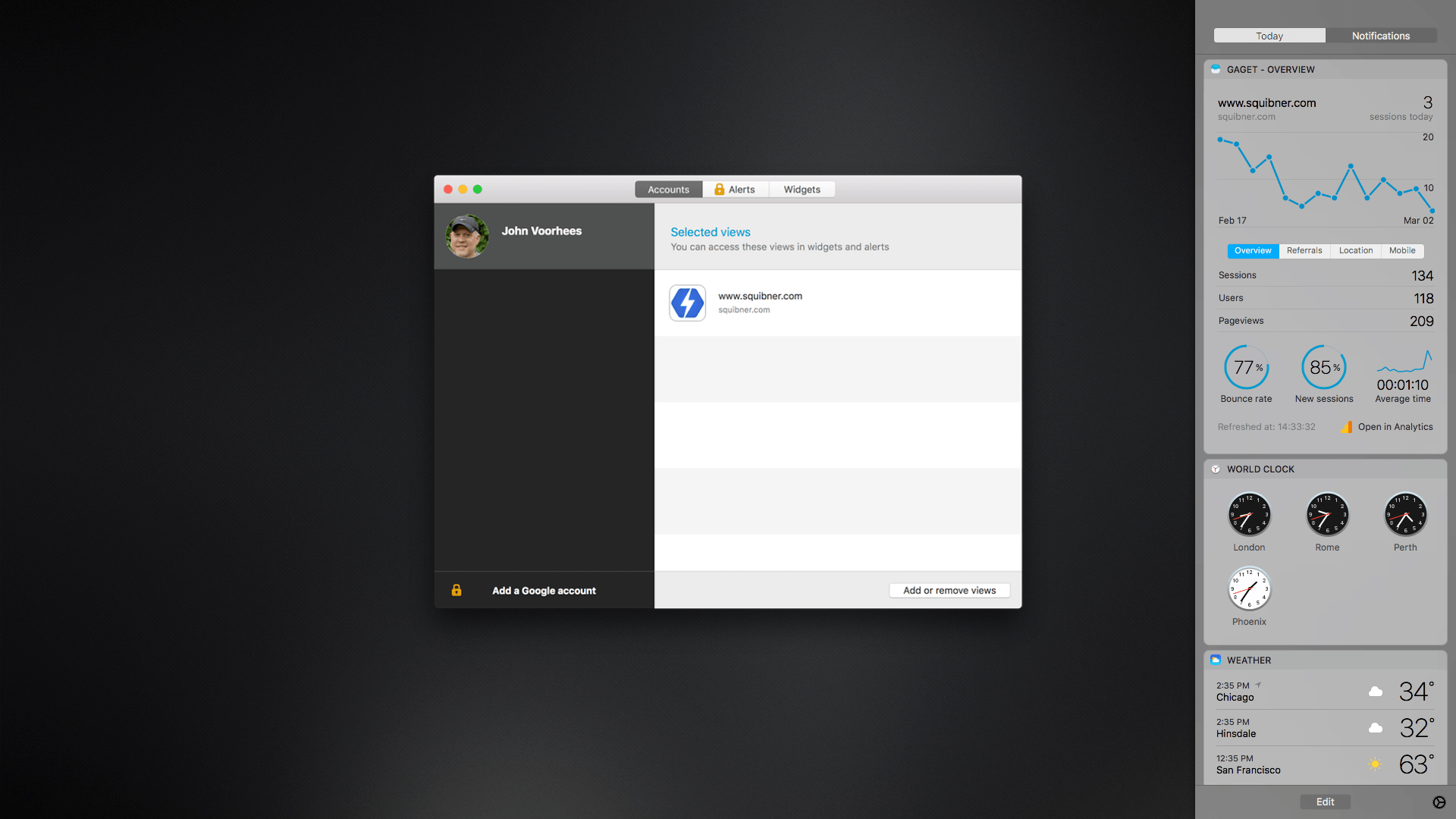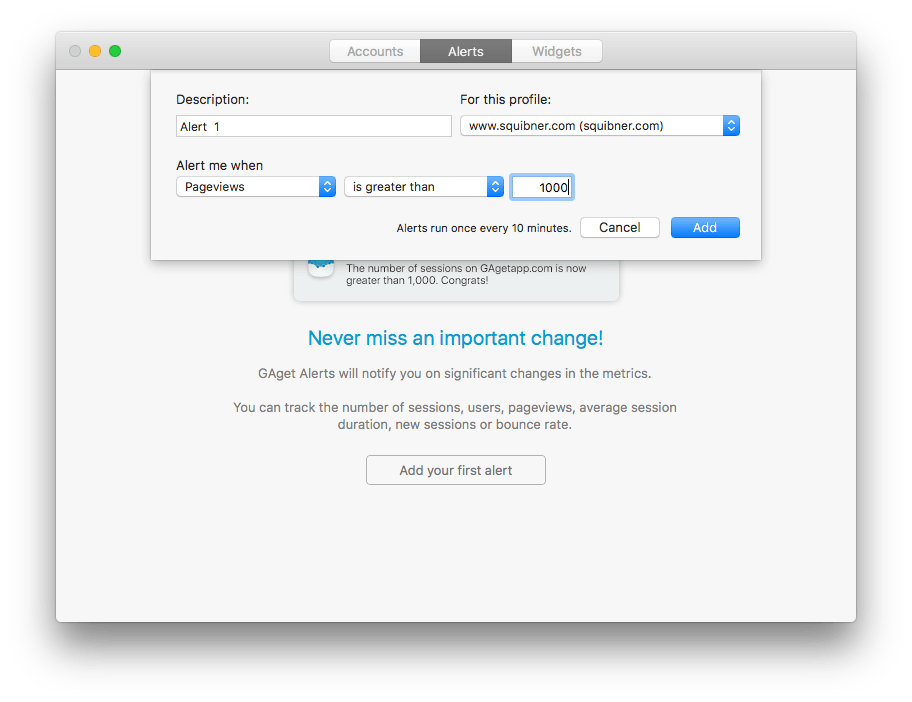GAget is a Google Analytics app for macOS that started life as a Dashboard widget. These days, GAget resides in macOS’s Today widget panel of Notification Center. If you’ve ever used Google Analytics, you know that its web interface is complex. There’s a place for digging through Google’s many tabs of data, but when all you want are the highlights, GAget is better. It takes Google Analytics’ data and boils it down into cleanly-designed dashboard widgets and alerts that make it easy to understand what is going on with your website at a glance.
GAget’s setup process was smooth and will be familiar to anyone who has connected a Google service to a macOS app. The usual dialog boxes pop up, asking for your login credentials and then to confirm you want to grant GAget access to Google Analytics information. Once connected, you choose which sites to track if you have more than one. The final step is to activate the widget in Notification Center.
GAget comes with an Overview widget built in that tracks several statistics. At the top of the widget is a line graph of traffic to your site during the past two weeks. Below that is a default view that has gauges to display data on sessions, users, pageviews, the bounce rate, new sessions, and the average time spent on your site by its visitors. You can also switch to views that list the sites from which you get the most referrals, the countries from which most of your visitors originate, and whether your visitors are using a desktop, phone, or tablet browsers.
A second widget that displays real-time data for your sites can be added for a $1.99 In-App Purchase. That widget is broken down by the number of active users and their locations, desktop versus mobile use, and which pages of your website are currently active. A third widget is planned that will measure advertising conversions.
In addition to the widgets, another GAget In-App Purchase lets you set up alerts that send system notifications when certain thresholds you set are passed. Alerts run every ten minutes and can be created on a per-site basis to measure sessions, users, pageview, average session duration, new sessions, and bounce rates. For each, you can trigger an alert if a certain absolute number is passed (more than 1,000 pageviews, for instance) or if the statistic you measure increases by a certain amount or percentage.
Automating alerts and the ability to take a quick peek at overall statistics with a swipe into Notification Center is a great way to monitor your website without spending a lot of time digging around on the Google Analytics site. GAget’s presentation of data is superior, and by making it so readily accessible will reduce the time you spend looking up statistics, which will give you more time to create content for your site.




